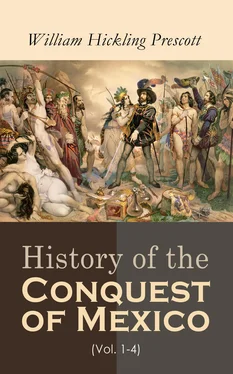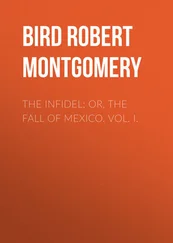William Hickling Prescott - History of the Conquest of Mexico (Vol. 1-4)
Здесь есть возможность читать онлайн «William Hickling Prescott - History of the Conquest of Mexico (Vol. 1-4)» — ознакомительный отрывок электронной книги совершенно бесплатно, а после прочтения отрывка купить полную версию. В некоторых случаях можно слушать аудио, скачать через торрент в формате fb2 и присутствует краткое содержание. Жанр: unrecognised, на английском языке. Описание произведения, (предисловие) а так же отзывы посетителей доступны на портале библиотеки ЛибКат.
- Название:History of the Conquest of Mexico (Vol. 1-4)
- Автор:
- Жанр:
- Год:неизвестен
- ISBN:нет данных
- Рейтинг книги:5 / 5. Голосов: 1
-
Избранное:Добавить в избранное
- Отзывы:
-
Ваша оценка:
History of the Conquest of Mexico (Vol. 1-4): краткое содержание, описание и аннотация
Предлагаем к чтению аннотацию, описание, краткое содержание или предисловие (зависит от того, что написал сам автор книги «History of the Conquest of Mexico (Vol. 1-4)»). Если вы не нашли необходимую информацию о книге — напишите в комментариях, мы постараемся отыскать её.
VIEW OF THE AZTEC CIVILIZATION:
Ancient Mexico
Aztec Empire
Judicial System
Military Institutions
Mexican Mythology
The Temples
Astronomy
Tezcucans
Decline of their Monarchy…
DISCOVERY OF MEXICO:
Spain under Charles V.
Colonial Policy
Expeditions to Yucatan
Hernando Cortés
Conversion of the Natives
Great Battle with the Indians
Christianity introduced
Voyage along the Coast
Spaniards land in Mexico…
Account of Montezuma
Spanish Encampment
Plan of a Colony
Management of Cortés
Foundation of Vera Cruz
Conspiracy in the Camp
The Fleet Sunk
MARCH TO MEXICO:
Republic of Tlascala
Desperate Battles
Decisive Victory
Peace with the Republic
Spaniards enter Tlascala
Terrible Massacre
Ascent of the Great Volcano
Entrance Into the Capital…
RESIDENCE IN MEXICO:
Description of the Capital
Montezuma's Deportment
Further Measures of Cortes…
Montezuma swears Allegiance to Spain
Politic Conduct of Cortés
Discontent of the Troops
Insurrection in the Capital
Rising of the Aztecs…
EXPULSION FROM MEXICO:
Desperate Assault on the Quarters
Storming of the Great Temple
Death of Montezuma
Retreat of the Spaniards
Great Battle of Otumba
War with the surrounding Tribes
Spaniards cross the Sierra…
SIEGE AND SURRENDER OF MEXICO:
Arrangement at Tezcuco
Battles at Xochimilco
Narrow Escape of Cortés
Conspiracy in the Army
Beginning of the Siege…
Indian Flotilla defeated
General Assault on the City
Successes of the Spaniards
Termination of the Siege…
SUBSEQUENT CAREER OF CORTÉS:
Submission of the Country
Rebuilding of the Capital
Settlement of the Country
Christian Missionaries
Voyages and Expeditions
Cortés Returns to Spain
Brilliant Reception of Cortés
Cortés revisits Mexico
His Voyages of Discovery
Final Return to Castile
Death of Cortés…












